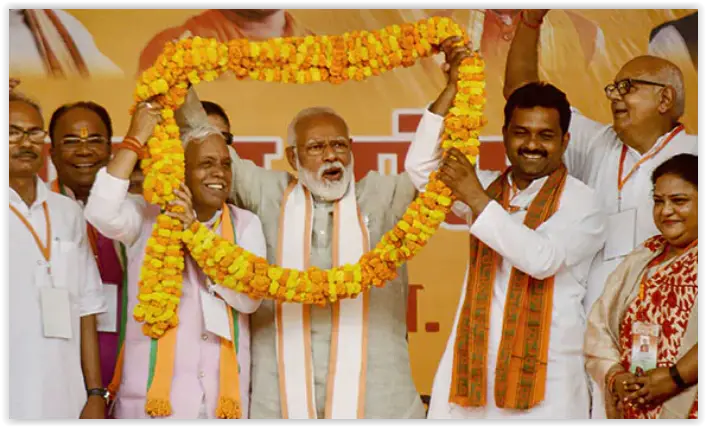As dawn breaks this Friday, India embarks on what is heralded as the world’s largest democratic exercise. The stakes are high and the scale monumental, involving over a million polling stations, 15 million dedicated staff, and the fate of 1.4 billion citizens poised at the crossroads of continuity and change.
At the heart of this electoral behemoth is Prime Minister Narendra Modi, a figure seeking a historic third term after a decade at the helm. The electoral battleground is vast, with voters set to determine the composition of the 543-seat Lok Sabha, India’s lower house of parliament. Here, amidst a mosaic of national and regional parties, the path to leadership is clear: secure a simple majority and form the government.
The Bharatiya Janata Party (BJP), under Modi’s leadership, confronts a fragmented opposition. Riding high on past successes, Modi is not just optimistic but assertive of a landslide victory that surpasses the previous count of 303 seats.
Modi’s Era: Achievements and Controversies
Modi’s tenure has been marked by significant economic strides, positioning India as the fifth-largest global economy and a vanguard of Hindu cultural renaissance. Yet, this journey has not been without its shadows. Critics and human rights organizations voice concerns over the erosion of secular democratic values and rising communal tensions, particularly impacting the Muslim community, which forms a substantial part of the populace.
Internationally, Modi has fortified India’s ties with the United States, navigating the geopolitical chessboard against a backdrop of Chinese assertiveness. These relationships, bolstered by a robust Indian diaspora, have been pivotal in Modi’s foreign policy.

Domestic Challenges and Economic Disparities
Domestically, Modi’s government has been proactive, launching infrastructure projects and social welfare initiatives. However, economic policies like the controversial demonetization and pandemic-induced lockdowns have been detrimental, sparking debates about their long-term impact on India’s economic fabric.
The narrative of economic recovery is marred by stark inequalities—a report by Oxfam highlights the widening chasm between the affluent and the impoverished, with a significant portion of wealth concentrated in the hands of a few.
The Cult of Modi and Political Dynamics
The BJP’s strategy intertwines Modi’s charismatic leadership with Hindu nationalist sentiments, a combination that has helped the party navigate through turbulent times. Modi’s presence is ubiquitous, from government advertisements to cardboard cutouts for public selfies, a testament to his cultivated image as the face of the nation.
Amidst these dynamics, the media and judiciary face pressures that hint at a tilt towards authoritarianism, a sentiment echoed by some yet seemingly accepted by many, as indicated by a Pew Research survey suggesting a high approval for authoritarian governance among Indians.
The Opposition’s Struggle
The opposition faces its own trials. Fragmentation within and the lack of a unifying leader have left them struggling to present a compelling alternative to Modi’s leadership. The Congress party, despite historical significance, grapples with internal challenges and external pressures, including legal battles and allegations of corruption that further weaken their stance.
Election Integrity and Fair Play
The integrity of the Indian electoral process, generally upheld by international standards, faces its own set of challenges. Issues such as electoral violence, misinformation, and bribery are prevalent, with recent crackdowns leading to significant seizures of illicit goods meant to sway voters.
As the nation stands on the precipice of what could be a transformative phase, the global community watches closely. Will this electoral exercise reinforce the pillars of the world’s largest democracy, or will it usher in a new era defined by the visions of its current leader?
This election is not just a test of leadership but a reflection of the vibrant, albeit complex, tapestry of Indian democracy.